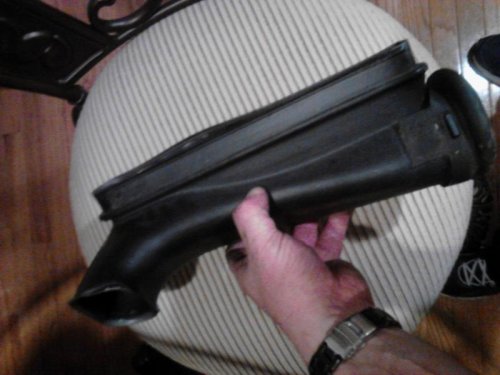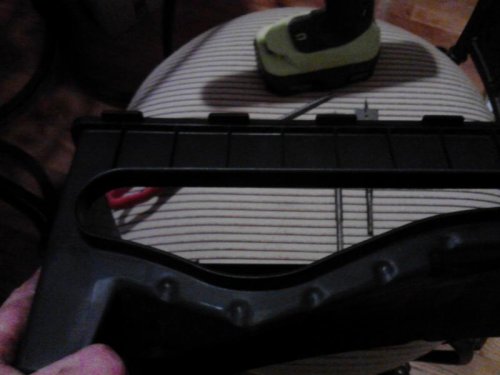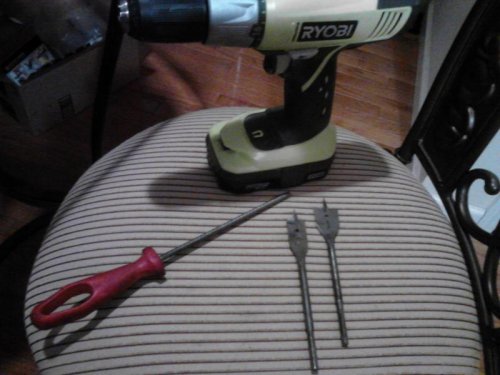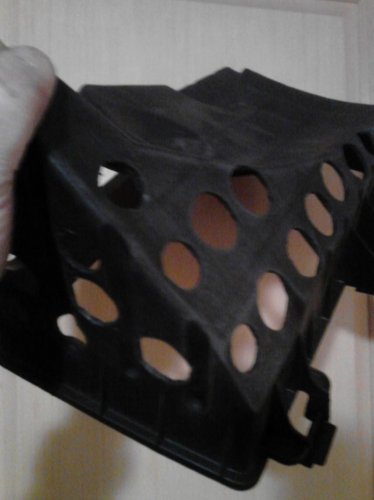devosm
LVC Member
Installed my new chip and in dash nav system
thats a nice color stugots, ever consider going black rims and trim?? what model 300 were you considering of getting cause they are really nice
I really liked the 300s v6. I even think the base v6 is good enough for me. The 8 speed really makes a difference. I would say it's just as quick as the LS, probably because of the transmission. The 300c is nice and all but I hate the 5 speed, and I can't justify the price over what little gain in performance I would get.
I know, I know. Not too many other attractive options today..And at the end of the day you would still have a Fiat, er, Chrysler.




Installed my new chip and in dash nav system

Looks pretty cool 2005LSV8! Might as well cut the whole bottom out though like on here: http://www.lincolnvscadillac.com/tech/Lincoln-LS/Modify-Airbox/
After I hooked up the battery, I went to open the driver's door and that set off the alarm. On startup, I got an error about 'foot on brake/set parking brake. That finally went away after a few minutes of driving. The memory seats would not accept a setting until this afternoon. Now, everything seems normal again.
Really, if this is true then Ford will save a lot of money by getting rid of the snorkel and since there is less material for the intake housing it will be cheaper (either making more holes or cutting the bottom) to manufacture. I hope this is not just a placebo effect. There might be a difference if the air filter is dirty to begin with and was replaced with this mod.
http://www.youtube.com/watch?v=gCi2yo4UqPI
This test is more scientific than Mythbuster's redneck methods. Anybody who can debunked this?Their test is flawed (I don't remember how as I don't want to watch this again). Just like Myth Busters said it was more efficient to drive freeway speeds with the windows open than running the A/C. They did that test at 50mph. IIRC, they were called out on and redid the test at ACTUAL freeway speeds. Shock of shocks, they "discovered" that at actual freeway speeds running the A/C vs having the windows down yielded better economy. Who'da thunk?????
Their test is flawed (I don't remember how as I don't want to watch this again). Just like Myth Busters said it was more efficient to drive freeway speeds with the windows open than running the A/C. They did that test at 50mph. IIRC, they were called out on and redid the test at ACTUAL freeway speeds. Shock of shocks, they "discovered" that at actual freeway speeds running the A/C vs having the windows down yielded better economy. Who'da thunk?????
I would bet money your battery's on the way out. The alarm will do that after disconnecting the battery for a lengthy time or when reconnecting a low battery. The parking brake instruction is normal after battery replacement.
Really, if this is true then Ford will save a lot of money by getting rid of the snorkel and since there is less material for the intake housing it will be cheaper (either making more holes or cutting the bottom) to manufacture. I hope this is not just a placebo effect. There might be a difference if the air filter is dirty to begin with and was replaced with this mod.
A difference in what? Performance? By removing dirt, which would allow what? More air flow into the engine, more Cubic Feet per Minute, CFM? Are we to believe that more air into a clean filter would harm performance? Or would it just have no effect at all? Now those electric inline fans, those are a drag on performance, because they don't move any more air. In fact, they slow it down by air resistance from the too-slow-moving fan blades. Pure, factory intake CFM would be better than that. But the reason intakes have become popular, even when expensive, is that they do indeed let in more CFM of air into the engine for a given throttle position. Performance is improved along the entire power band. At low speeds, the lowered air resistance increases MPG.
Now, why do Ford and all other manufacturers not do this? Aesthetics, emissions requirements, tradition, not wanting to market a car that runs at it's physical limits... I can think of many reasons. As far as the gains in performance, the proof is in the pudding. Like I said, I've done this to some cars and it didn't do as much as I wanted or expected. Those were the one valve per cylinder engines. My old Sebring six cylinder engine had either 12 or 24 valves, I forget, but the intake had an impact there. On the LS V8 32 valve engine, the effect is rather astounding. My V8 F150, I think only 8 valves, single overhead cam, 5.4L, the intake added some power, but it didn't blow me away.
So it's a direct relationship to valve count, IMO. Probably some other comparison is more correct. But essentially, the more you are processing that air down the line to get some additional performance, such as Dual Overhead Cam and 4 valves per cylinder, the more you are going to benefit from a de-restricted intake. The rich get richer, in this case. The poor get only moderately less poor. So you would have to define what all the possible test vehicles scenarios COULD be. Did they do that, or did they just grab some rental piece of junk? I haven't watched their video, they irk me. I'm pretty sure I could put a restricted intake system on a Viper and then put an open intake system on the same Viper and see some measureable gains in performance.
A difference in what? Performance? By removing dirt, which would allow what? More air flow into the engine, more Cubic Feet per Minute, CFM? Are we to believe that more air into a clean filter would harm performance? Or would it just have no effect at all? Now those electric inline fans, those are a drag on performance, because they don't move any more air. In fact, they slow it down by air resistance from the too-slow-moving fan blades. Pure, factory intake CFM would be better than that. But the reason intakes have become popular, even when expensive, is that they do indeed let in more CFM of air into the engine for a given throttle position. Performance is improved along the entire power band. At low speeds, the lowered air resistance increases MPG.
Now, why do Ford and all other manufacturers not do this? Aesthetics, emissions requirements, tradition, not wanting to market a car that runs at it's physical limits... I can think of many reasons. As far as the gains in performance, the proof is in the pudding. Like I said, I've done this to some cars and it didn't do as much as I wanted or expected. Those were the one valve per cylinder engines. My old Sebring six cylinder engine had either 12 or 24 valves, I forget, but the intake had an impact there. On the LS V8 32 valve engine, the effect is rather astounding. My V8 F150, I think only 8 valves, single overhead cam, 5.4L, the intake added some power, but it didn't blow me away.
So it's a direct relationship to valve count, IMO. Probably some other comparison is more correct. But essentially, the more you are processing that air down the line to get some additional performance, such as Dual Overhead Cam and 4 valves per cylinder, the more you are going to benefit from a de-restricted intake. The rich get richer, in this case. The poor get only moderately less poor. So you would have to define what all the possible test vehicles scenarios COULD be. Did they do that, or did they just grab some rental piece of junk? I haven't watched their video, they irk me. I'm pretty sure I could put a restricted intake system on a Viper and then put an open intake system on the same Viper and see some measureable gains in performance.
I have a friend who has a BMW m5, it has 500hp. The 2 MAF sensors were disconnected from the 2 intakes, the reason is that the computer is told to ignore the values from the sensor and just tune it always for performance. In this case you are sacrificing gas mileage for performance. Any tuner specialist will say you can't have both, that's why I'm skeptical when somebody says "It improved my mileage and at the same time I have more power".
My opinion, is that on its own an intake doesn't do much other than look cool and sound good.
With the ways cars are controlled by computers these days you could put a huge cone on the front of your car leading into the intake and see almost nothing. The computer is going to adjust everything to compensate to get the car to run the way it is supposed to. In order of what I did to my car was 1)Intake 2)Full Exhaust) 3)Tune.
With the intake the sound change was the biggest factor no noticeable performance gain. The exhaust bumped me a good bit on the butt dyno but as it should. I got a full magnaflow system to include cats. Now, even with those things the computer was still in charge. Once I got a Torrie tune, holy ****. Much improvement in almost every department but I'll stay on topic here with the engine. With the ability to intake more air and get the exhaust out quicker the tunes Torrie made for me, MPG...Performance....and Performance + 2 degree's of timing, made a world of difference. I haven't tried MPG yet, maybe on a long trip or something. I also haven't tried performance +2, just performance. The car is noticeably quicker. It's not like adding a turbo or anything I mean you have to be realistic. I'd estimate 10-15 in gains on both HP and TQ. The shift speed increase is really what gets you going quicker.
I use the Torque Pro android app and a OBDII bluetooth adapter. It's not exact but it's close enough. I've launched to 60 in 6 flat before according to that thing. It was 6.6 with just the intake.
Again, the ability for the intake to make some gains is there. It doesn't take a rocket scientist to see the obvious improvement in flow path and resistance, but you have got to modify that computer to actually use it.
